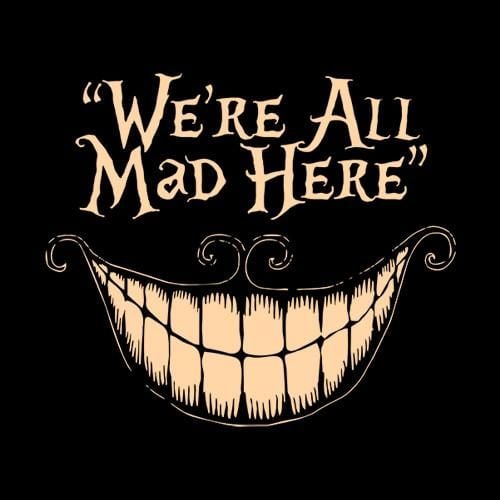I know a lot of languages have some aspects that probably seem a bit strange to non-native speakers…in the case of gendered words is there a point other than “just the way its always been” that explains it a bit better?
I don’t have gendered words in my native language, and from the outside looking in I’m not sure what gendered words actually provide in terms of context? Is there more to it that I’m not quite following?
Speaking one language that is mildly gendered (English), two that are strongly (and in the case of the second bizarrely!) gendered (French, German) and one that is almost entirely ungendered (Mandarin), I have not found any utility whatsoever in grammatical gender.
I suspect that grammatical gender is just an ur-form of grammatical classifiers that has stuck around for non-useful amounts of time. I suspect this because one of the grammatical “gender” divisions that’s in use in many languages isn’t masculine/feminine(/neuter) but rather animate/inanimate. So I suspect that grammatical gender was a classification mechanism whose system and utility was distorted into uselessness over the thousands of years of spread and development.
So why do we have classification mechanisms? Well, in Mandarin there’s classifier words. (In English too: “a sheet of paper”, not “a paper”, but it’s waaaaaaaaaaaaay stricter in Mandarin.) The classifiers in Mandarin, given the sheer amount of punning potential in oral language, are likely a redundant piece of information to help nail down which specific word you mean in contexts where it might be unclear. For example in a noisy environment, or if someone is speaking unclearly, “paper” (纸张[zhǐ zhāng]) might be confused with “spider” (蜘蛛 [zhī zhū]). But if I say 一只蜘蛛 [yī zhī zhī zhū]—a spider—it’s harder to confuse that with 一张纸张 [yī zhāng zhǐ zhāng]—a piece of paper.
So I’m positing that perhaps at some point grammatical gender was used as a primitive form of classification for disambiguation that some languages just never grew out of. Which is why in German men are masculine, women are feminine, boys are masculine, and girls are neuter. It has nothing to do with actual physical gender and is just a weird, atrophied, and somewhat useless remnant of language.
Regarding the paper analogy,
Paper is a material, not a discrete object. A sheet is an object, but is ambiguous until you quantify what is it a sheet of.
You could have a sheet of paper, or metal, or pasta.
A page would be a way to say a sheet of paper as an object.
I’m sorry that the Chinese classify things differently from you. I’ll get right on asking them to change it to suit your thoughts. (As it so happens, the classifier 张 is, in fact, “flat objects”. Fancy that! Perhaps reading what I actually wrote instead of what you wanted me to write so you could “well akshually” me might be an advantage.)
I’m reporting what is, not recommending.
All good man,
I was just talking about your analogy using the English language, and how it seem like a false comparison. I wasn’t commenting on the Chinese. No need to be rude.
What. Fucking. Analogy?
There are a lot of things in German that make far more sense than English (the pronunciation of ie vs ei for example), but nobody needs that many words for you or the.
I love German’s case structure! Except that the gender system slices through what could be an elegant way of piecing sentences together in any order without ambiguity and turns it into a muddled mess that requires you to memorize the silly gender of every damned noun in the language. ☹
What we call “grammatical gender” in Indo-European languages is a worn-down version of a noun class system. English’s is extremely worn-down; we only use gender on pronouns, whereas many other European languages use it on articles and adjectives with all nouns.
Some other language families have much more complicated sets of noun classes. Dyirbal has four (roughly: masculine, feminine, edible, and other). There’s a language in Georgia with eight, including two dedicated to body parts. Swahili has eighteen (and both adjectives and verbs are inflected to agree with nouns).
Meanwhile the Uralic languages (including Finnish and Hungarian) don’t have noun classes, not even gendered pronouns.
In languages with noun classes, it’s common for the words for “man” and “woman” to belong to different noun classes. And when we say “this word has feminine gender” all we’re really saying is “this word is in the same noun class as ‘woman’.”
Learn Indonesian/Malay. They are the most logical and uncluttered language around. No bullshit grammar and spelling rules.
It creates an additional connection between the parts of speech you intend to be conceptually linked.
Eg. “He kicked the ball at the park - it was huge!” Was the ball huge or the park? If ‘ball’ and ‘park’ have different genders in your language, then it’s easier to know immediately what ‘it’ represents.
This allows for greater freedom to majorly rearrange a sentence and still be understood. It also helps poetry and LLMs, incidentally, when you can just throw words around and people know which adjective goes with which noun, etc. Not that Chinese poetry ever cared much about that, but that’s a different topic.
Why is it related to gender? I guess they just picked something to relate the new system to the people around them, like picking colours to represent emotions. It’s a clunky 3 category system, but if you’re creating enough ambiguity in your sentences that 3 additional categories of differentiation can’t help with… well. Then you have other conjugation systems you can implement. Looking at you, Finnish. Or you can go the English route and get really strict about your word order.
What if the ball and the park are the same gender?
Then you still have the same issue, but it occurs as maybe a 1/3 chance (where 3 is the genders for Latin, other systems have more/less) instead of as a 100% chance in languages that assign connections based only on word order.
It’s obviously not a perfect solution, but it does significantly reduce ambiguity in phrase construction for languages which use it. And it’s (often) of sufficiently limited complexity that it doesn’t cause too much cognitive overload for most people during a conversation.
I’m not fluent in any gendered languages, but afaict in many situations pronouns are removed in favor of a gendered suffix, shortening phrases.
Aside from English I assume? :)
Imo English is mostly devoid of gendered nouns. Things like waiter and waitress, actor and actress, postman and post woman are still around but most nouns are not gendered. Gender is still considered essential for English pronouns, but it’s easy to do without.
No, it’s just how it’s always been, same with all the other grammar constructs like stemming, prepositions, anything. Often it doesn’t convey any additional information and it’s just a bitch to learn.
I mean, if your native language (or one you know very well) has gendered nouns, you may tend to think of inanimate objects as male or female - not all the time, but say, when writing poems and such.
Research also shows that we tend to associate inanimate objects with gendered qualities based on language. So if in your language “bridge” is male, you’re more likely to associate bridges with being strong and tough, while someone whose language has female bridges tends to think of them as lean and elegant. It’s a bit of a feedback loop that way.
But logically, no, no real reason or meaning. When adapting foreign words into the language, the tendency is to follow the habits of the receiving language. Such as if in your language most female nouns end with -a, then you’ll probably use new words ending with -a also in the context or grammar of female gender.
Ed: obviously there’s meaning if it refers to people, e.g. if “customer” has two variants based on gender - that’s additional information of the actual gender of the person. Of course then there’s the opposite issue if the gender of the person isn’t known. Usually there’s a fallback of some sort.
it’s just how it’s always been, same with all the other grammar constructs like stemming, prepositions
Yup, and that’s why when it’s reasonable i try to cut down on those vestigial parts. For example US english uses the word “the” way more than UK english, so as an american I try to omit “the” whenever it wouldn’t sound totally wacky. For example British people say “he’s in hospital” but americans say “he’s in the hospital”. UK people say “in future”, while Americans say “in the future”. In these cases “the” adds nothing to the sentence.
The research you are basing your third paragraph on was actually never published and its claims have remained controversial.
I recommend you check this great video on both grammatical gender and Boroditsky’s article: https://www.youtube.com/watch?v=1q1qp4ioknI
Ah okay. I just vaguely remember reading about it ages ago. But as someone whose native language is gendered, I do agree with that assessment at least to a degree. Nouns do have certain tone to them which generally corresponds to their gender as well, such as what I mentioned, words ending with -a usually being feminine and just having that softer vibe than words ending on a consonant. Tho that depends on the particular language of course.
And I wouldn’t underestimate the feedback loop from language to thinking in general. For example it’s well documented how we remember colors is quite dependent on how they’re named.
Well unless that was debunked as well, but considering both linguistics and art are my hobbies, that might shatter my entire world view heh.
There is some debate in France about gendered profession names. Conservative want them removed. Feminists are asking for a neutral form. Regular language usually has gender for them.
In terms of utility, it adds information in a tight way. When you use the gendered name, you add the information about the gender of the person. When there is a neutral form, you can also choose to not give this information.
Obviously when your language doesn’t give you this possibility it’s harder to get used to it. From my perspective I’m sometimes put off by the lack of specificity and accuracy, or by the ambiguity of the English language.
It makes some sense for people-related words like a person’s’ occupation. Why are objects gendered though?
This I don’t know but I would suspect it’s a mix of poetry, usage, and the Latin root, at least in French.
deleted by creator
Even though the main reason is that it’s allways has been so, I can see two minor arguments that haven’t been said here yet:
- The gender of some words may vary between different regions (still within one language), so used gender gives you aditional information about the speaker.
(From Czech perspective this is not really a thing, becouse before you stumble across one of the few words that have this property, you can usually estimate the origin of the speaker by another signs.) - By asigning a gender to animals, you’re proner to percieve them as living persons, compared with a language that classifies them as inanimate (English, “it”).
(I am not backed by any scientific study here, it’s only my feeling; and you could also claim that better solution would be ungendered language without animate/inanimate distinction, or classifying animals as animates.)
- The gender of some words may vary between different regions (still within one language), so used gender gives you aditional information about the speaker.
Because fuck you that’s why. On a more serious note, as an Arabic speaker I have no idea.






